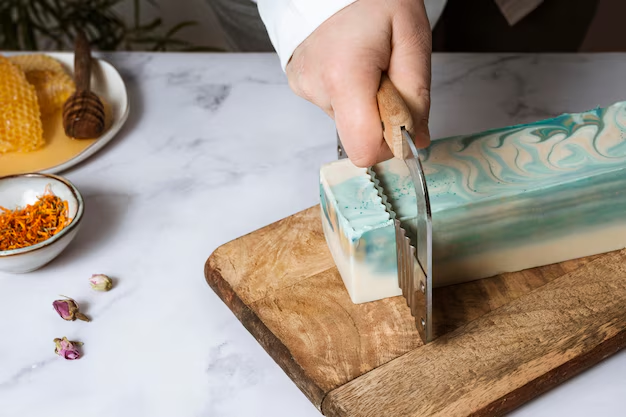How to Keep Butter Soft in the Refrigerator: A Comprehensive Guide
Butter is the unsung hero of many kitchens, lending its rich flavor to both sweet and savory dishes alike. But, as essential as it is, we often grapple with the challenge of keeping it soft and spreadable while stored in the refrigerator. If you're tired of fighting with cold, rock-hard butter every morning, this guide is for you. Here, we explore effective methods to maintain that perfect, creamy texture, ensuring your butter is as ready to spread as you are to start your day. 🧈
Understanding Butter: The Basics
Butter is a dairy product made from churning milk or cream, composed primarily of fat, water, and milk proteins. Its creamy texture and slight sweetness come from these natural components, which makes proper storage essential. Too cold, and your butter becomes hard and crumbly; too warm, and it can go bad quickly. So how do we navigate this delicate balance?
The Science Behind Butter Hardening
When butter is refrigerated, fat molecules pack tightly together, forming a solid mass that's difficult to spread. The key to keeping butter soft in the refrigerator is to disrupt these molecular bonds just enough to maintain a softer texture.
Methods to Keep Butter Soft in the Refrigerator
Here's a collection of tried-and-true methods to keep your butter at the ideal consistency, even when stored in the fridge.
1. Use a Butter Dish with a Lid
A butter dish with a lid can be an effective solution. By slightly insulating the butter, it helps reduce exposure to cold air, maintaining a softer surface.
Benefits:
- Simple and cost-effective.
- Keeps butter fresh by reducing air exposure.
2. Butter Bells or Crocks
Invented by the French, a butter bell or crock is a clever contraption that utilizes water to create an airtight seal. Place the butter in the bell, then invert it into the crock filled with cold water.
Benefits:
- Maintains freshness and softness.
- Keeps butter fresh for extended periods without refrigeration.
3. Ratio Butter with Oil
Mixing butter with oil—such as olive or canola oil—helps maintain a spreadable texture even at lower temperatures. This also imparts a slight flavor variation, enhancing your culinary creations.
How To:
- Soften a stick of butter.
- Blend with 1/4 to 1/3 cup of oil of your choice.
- Store it in the refrigerator in a covered container.
Benefits:
- Customizable flavor.
- Remains spreadable longer.
4. Keep Butter in the Door Compartment
If you prefer not to alter your butter or invest in additional kitchenware, simply store the butter in the fridge door compartment. This area maintains a slightly warmer temperature compared to the fridge's interiors, keeping butter softer.
Benefits:
- Minimal changes to routine.
- No additional tools required.
Creative Alternatives and Additional Insights
Beyond basics, let's delve into some alternative insights and creative tweaks that could elevate your butter storage game further.
Freezer "Slice and Store" Technique
For those who need their butter to last even longer, consider slicing it into smaller pats before freezing them individually. These can then be thawed as needed, or kept softer by storing one or two in the refrigerator.
DIY Infused Butter
Elevate your butter game by creating infused butters with herbs or spices. Not only will this impress at the dining table, but it also provides a fun way to control butter textures through innovative mixing.
Example:
- Garlic Herb Butter
- Blend softened butter with minced garlic and fresh parsley.
- Store as a log wrapped in parchment in the fridge or freezer.
Frequently Asked Questions
How Long Can Butter Stay Out?
While it's generally safe to leave butter out for short periods, it's best to store it in the refrigerator long-term to prevent spoilage and maintain quality. Unsalted butter, especially, has a shorter shelf life than its salted counterpart.
Tip: For those concerned about spoilage when leaving butter at room temperature, consider using a butter bell or similar contraption to keep it fresh without chilling.
Is Microwave Softening Safe?
Microwaving butter is a quick way to soften it but requires caution to avoid melting it completely. Try cutting the butter into smaller pieces and using a low-power setting on your microwave for short intervals.
Can Salted Butter Last Longer?
Yes, the salt in salted butter acts as a natural preservative, extending its shelf life compared to unsalted varieties. This makes it a more forgiving option for room temperature storage.
Summary of Tips for Keeping Butter Soft 🧈
Here's a handy list to recap the methods we've discussed:
- Use a butter dish with a lid: Reduces air exposure and keeps butter soft.
- Try a butter bell or crock: Creates an airtight seal with water.
- Blend butter with oil: Keeps it spreadable and adds flavor.
- Store in the fridge door: Warmer compartment softens butter.
- Adopt the slice and store technique: Control portion and preserve texture.
Embracing these strategies will not only maintain the texture of your butter but also enrich your dining experiences with flavor and convenience.
Understanding how to keep butter soft in the refrigerator blends culinary science with the art of kitchen management. By tailoring these methods to your preferences and lifestyle, you can enjoy buttery, spreadable delight at any time without the struggle. Bon appétit!
